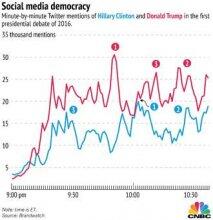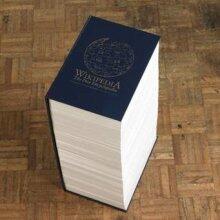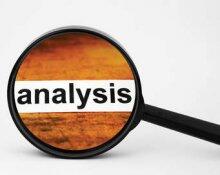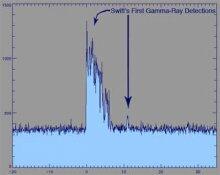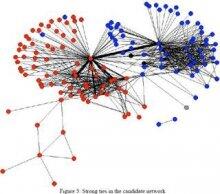Crunching the words, experts find Trump got the attention, Rubio made the most of his chances and Jeb squandered them. A lot of ink has been spilled over last Wednesday’s debate, but here’s another way to talk about it. Judging purely by the data, Trump still dominated - but Fiorina and Christie really stepped forward, and Rubio made the most of the openings he had. Jeb Bush, meanwhile, had plenty of chances but largely let them slip by.
Publications
2015
The use of socio-technical data to predict elections is a growing research area. We argue that election prediction research suffers from under-specified theoretical models that do not properly distinguish between ’poll-like’ and ’prediction market-like’ mechanisms understand findings. More specifically, we argue that, in systems with strong norms and reputational feedback mechanisms, individuals have market-like incentives to bias content creation toward candidates they expect will win. We provide evidence for the merits of this approach using the creation of Wikipedia pages for candidates in the 2010 US and UK national legislative elections. We find that Wikipedia editors are more likely to create Wikipedia pages for challengers who have a better chance of defeating their incumbent opponent and that the timing of these page creations coincides with periods when collective expectations for the candidate’s success are relatively high.
Do formal deliberative events influence larger patterns of political discussion and public opinion? Critics argue that only a tiny number of people can participate in any given gathering and that deliberation may not remedy - and may in fact exacerbate - inequalities. We assess these criticisms with an experimental design merging a formal deliberative session with data on participants’ social networks. We conducted a field experiment in which randomly selected constituents attended an online deliberative session with their U.S. Senator. We find that attending the deliberative session dramatically incresed interpersonal political discussion on topics relating to the event. Importantly, after an extensive series of moderation checks, we find that no participant/nodal charactersitics or dyadic/network characteristics, conditioned these effects; this provides reassurance that observed, positive spillovers are not limited to certain portions of the citizenry. The results of our study suggest that even relatively small-scale deliberative encounters can have a broader effect in the mass public, and that these events are equal-opportunity multipliers.
The increasing abundance of digital textual archives provides an opportunity for understanding human social systems. Yet the literature has not adequately considered the disparate social processes by which texts are produced. Drawing on communication theory, we identify three common processes by which documents might be detectably similar in their textual features - authors sharing subject matter, sharing goals, and sharing sources. We hypothesize that these processes produce distinct, detectable relationships between authors in different kinds of textual overlap. We develop a novel n-gram extraction technique to capture such signatures based on n-grams of different lengths. We test the hypothesis on a corpus where the author attributes are observable: the public statements of the members of the U.S. Congress. This article presents the first empirical finding that shows different social relationships are detectable through the structure of overlapping textual features. Our study has important implications for designing text modelling techniques to make sense of social phenomena from aggregate digital traces.
Using data from a novel laboratory experiment on complex problem solving in which we varied the structure of 16-person networks, we investigate how an organization’s network structure shapes the performance of problem-solving tasks. Problem solving, we argue, involves both exploration for information and exploration for solutions. Our results show that network clustering has opposite effects for these two important and complementary forms of exploration. Dense clustering encourages members of a network to generate more diverse information but discourages them from generating diverse theories; that is, clustering promotes exploration in information space but decreases exploration in solution space. Previous research, generally focusing on only one of those two spaces at a time, has produced an inconsistent understanding of the value of network clustering. By adopting an experimental platform on which information was measured separately from solutions, we bring disparate results under a single theoretical roof and clarify the effects of network clustering on problem-solving behavior and performance. The finding both provides a sharper tool for structuring organizations for knowledge work and reveals challenges inherent in manipulating network structure to enhance performance, as the communication structure that helps one determinant of successful problem solving may harm the other.
2014
It’s too easy to be led astray by the lure of big data. Google Flu Trends has long been the go-to example for anyone asserting the revolutionary potential of big data. Since 2008 the company has claimed it could use counts of flu-related Web searches to forecast flu outbreaks weeks ahead of data from the Centers for Disease Control and Prevention. Unfortunately, this turned out to be what i call big-data hubris. Colleagues and I recently showed that Google’s tool had drifted further and further from accurately predicting CDC data over time. Among the underlying problems was that Google assumed a constant relationship between flu-related searches and flu prevalence, even as the search technology changed and people began usingit in different ways.
Developing technologies that support collaboration requires understanding how knowledge and expertise are shared and distributed among communuity members. We explore two forms of knowledge distribution structures, coordination and cooperation, that are central to successful collaboration. We propose a novel method for detecting the coordination of strategic communication among members of political communities. Our method identifies a "rapid semantic convergence," a sudden burst in the use of linguistic constructions by multiple individuals within a short time, as a signature of coordination. We apply our method to the public statements of U.S. Senators in the 112th U.S. Congress and construct coordination and coopetation networks among these individuals. We then compare aspects of these networks to other known properties of the Senators. Results indicate that the detected networks reflect underlying tendencies in the social relationships among Senators and reveal interesting differences in how the different parties coordinate communications.
Politics is, at its core, a network phenomenon. Power - the central construct of political science - is intrinsically relational, where power exists between actors and among actors in a complex, differentiated fashion. India looms large for Nepal, not for Iceland. My boss is important to me, not you. More generally, we talk to people who affect what we think. Access and relationships among the powerful is indisputably important. One of the major subfields of political science is actually called international relations. And, as discussed below, there is a long standing interest in political science in networks, from the first years of the emergence of sociometrics. Perhaps the earliest effort in detecting clusters from relational data, one of the hottest areas in the study of networks currently, appeared in the American Political Science Review - in 1927 (Rice, 1927)! The first author on the first paper in the first issue of Social Networks was by one of the giants of the 20th Century political science, Ithiel de Sola Pool. This paper, circulating in unpublished form starting in the 1950s, was also the first to formulate the small world problem. One of the key drivers of the interest in networks the last 20 years has ben the vein of research on social capital - in part kicked off by research by a political scientist, Putnam et al. (1993), Putnam (2001). Given this history, it is therefore surprising that in the 20th century networks as a construct did not find a comfortable home within the discipline of political science, with a minimal presence in disciplinary journals. This has changed dramatically in the last decade, as part of a broader upsurge in interest in networks within the academy. One small illustration of this may be seen by the increase in the presence of networks at the annual meeting of American Political Science Association. A perusal of the program would have yielded few if any explicitly network related papers in any given year in the 1990s. In contrast, in the 2013 program, there are 23 network-themed panels, and over 100 papers explicitly evoking network concepts and data. This special issue thus represents an overdue reunion for the discipline and social network analysis. Our objective in this paper is to provide an overview of the trajectory of the research on political networks, and to place the contributions in this issue in that context. We begin with a short intellectual history of the long standing, if thin, history of network scholarship in the study of politics, maneuvering through the various, loosely coupled subfields of political science, and concluding with a discussion of what impact political science will have on the field of social networks as both move forward together.
Search is a ubiquitous property of life. Although diverse domains have worked on search problems largely in isolation, recent trends across disciplines indicate that the formal properties of these problems share similar structures and, often, similar solutions. Moreover, internal search (e.g., memory search) shows similar characteristics to external search (e.g., spatial foraging), including shared neural mechanisms consistent with a common evolutionary origin across species. Search problems and their solutions also scale from individuals to societies, underlying and constraining problem solving, memory, information search, and scientific and cultural innovation. In summary, search represents a core feature of cognition, with a vast influence on its evolution and processes across contexts and requiring input from multiple domains to understand its implications and scope.
Volunteer Science is an online platform enabling anyone to participate in social science research. The goal of Volunteer Science is to build a thriving community of research participants and social science researchers for Massively Open Online Social Experiments ("MOOSEs"). The architecture of Volunteer Science has been built to be open to researchers, transparent to participants, and to facilitate the levels of concurrency needed for large scale social experiments. Since then, 14 experiments and 12 survey-based interventions have been developed and deployed, with subjects largely being recruited through paid advertising, word of mouth, social media, research, and Mechanical Turk. We are currently replicating several forms of social research to validate the platform, working with new collaborators, and developing new experiments. Moving forward our priorities are continuing to grow our user base, developing quality control processes and collaborators, diversifying our funding models, and creating novel research.
